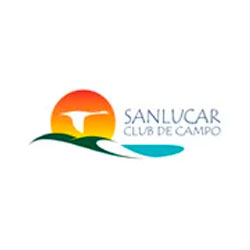Sanlúcar de Barrameda
Situated on the left of the mouth of the River Guadalquivir and opposite Doñana, the origins of the first settlement came about because of the building of a Phoenician temple dedicated to Astarté.
This stately town – declared a Historic Ensemble – has an urban design characterized by being divided into two great nuclei: the Barrio Alto and the Barrio Bajo. The Barrio Alto is the historic centre with the town’s monuments, narrow streets, white house fronts and aristocratic palaces such as the Palace of Orleáns y Borbón (beside the Basílica de Nuestra Señora de la Caridad) or the Renaissance Palacio Ducal de Medina Sidonia. Nearby, we can find the Arquillo or Rota Gate, the remains of the Medieval walls, the Santiago Castle (15th century), the Las Descalzas Convent and Nuestra Señora de la O Church.
American Splendour
After the discovery of the New World, this town became a port of reference and the point of departure for Christopher Columbus on his third voyage, Magallanes and Juan Sebastián Elcano on the first round-the-world voyage. The greatest economic peak in its history comes thanks to the development of trade between America and the Port of Seville, under the protection of the Duques de Medina Sidonia. The arrival of the Duques de Montpensier, along with the wineries, brought about an economic and cultural revival in the 19th century.
Going down the Cuesta Belén towards the Barrio Bajo, there is the Auditorio de la Merced, and the 15th century ‘Covachas’ -the best example of Gothic architecture in the town– which decorate one of the façades of the Dukes Palace. The Plaza de San Roque is the site of the wonderful atmosphere of the Market Place, full colour and local flavour, with its stallholders singing the praises of their products at the tops of their voices. On the way to the Church of Santo Domingo (16th century), we find the Church of San Jorge and the Regina Coeli Convent. In the opposite direction, there is the Church of El Carmen and the Capuchin Convent.
To go for tapas in Sanlúcar, nowhere is better than the Plaza Cabildo or Bajo de Guía, the fisherman’s district inundated with restaurants where you can try the famous king prawns, fried fish and seafood dishes. The steamer “Real Fernando”, which crosses the river as far as the river mouth, allowing the visitor to discover Doñana, departs from the pontoon in Bajo de Guía.
The coast of Sanlúcar has 6km of beach, the most representative of which are the Bajo de Guía beach, La Calzada, Las Piletas, La Jara beaches and, on the bank of the National Park of Doñana, the Coto beach, also known locally as ‘la otra banda’, the other side. In Doñana, there are also several of Sanlúcar’s beauty spots: the Pinares de la Algaida and the Bonanza Marshes and Salt Beds are to be found.
The famous Horse Races (International Tourist Interest) take place on the beaches of this town, which were originally started by the aristocracy and bourgeoisie of 19th century Sanlúcar, who were keen to liven up the town’s social life during the summer season.
La Manzanilla
The genuine microclimate of the town is essential to the ageing of manzanilla –the most representative of the local wines – which is included in the Designation of Origin Jerez-Xeres-Sherry. It is a dry wine, suitable as an aperitif, with a beautiful pale golden colour, which is aged in white oak barrels in the wineries in the town centre known as the ‘cathedrals of wine’. These blend perfectly with the urban design of Sanlúcar, primarily in the Barrio Alto, where the Barbadillo Manzanilla Museum is also to be found.






